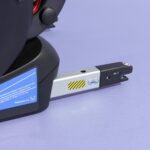Foot blisters are a common skin condition, characterized by raised pockets of clear fluid. These pesky bubbles are typically a reaction to pressure, heat, moisture, friction, or burns. Think of that annoying rub against your shoe while breaking in new footwear, or the constant pressure from holding sports equipment. While often just minor inconveniences, understanding how to properly care for foot blisters is key to quick healing and preventing complications.
If your blister isn’t causing significant pain, the best approach is often to protect it and let it heal naturally. The unbroken skin acts as a shield against bacteria, significantly reducing the risk of infection. To safeguard the blister, apply a bandage or moleskin. Moleskin, a robust, fabric-like material, is particularly effective in high-friction areas, offering an extra layer of protection.
To use moleskin effectively, cut a piece slightly larger than the blister itself, roughly an inch (2.5 centimeters) wider all around. Fold it in half, adhesive sides together, and cut a semi-circle out of the center fold, mirroring the blister’s size. Unfolding it reveals a donut-shaped piece with a hole in the middle. Position this moleskin donut over the blister, ensuring the blister sits comfortably within the hole. Secure the moleskin and blister with a layer of gauze for added protection.
Alt text: Applying moleskin to protect a foot blister, showing the donut shape and placement around the blister.
For blisters that are painful, draining the fluid can provide relief, but it’s crucial to do so while keeping the overlying skin intact. Individuals with diabetes, poor circulation, or those prone to infections should exercise extra caution to avoid infection.
Here’s a step-by-step guide on how to safely drain a blister and minimize infection risk:
- Clean Hands and Blister: Begin by thoroughly washing your hands and the blister area with soap and water.
- Apply Antiseptic: Swab the blister with an antiseptic solution to disinfect the area.
- Sterilize Needle: Clean a sharp needle using an antiseptic wipe or rubbing alcohol. Sterilization is key to preventing infection.
- Puncture and Drain: Gently prick the blister in several spots near its edge with the sterilized needle. Allow the fluid to drain out naturally, but importantly, leave the skin roof of the blister undisturbed.
- Antibiotic Ointment and Bandage: Apply a thin layer of antibiotic ointment or petroleum jelly to the drained blister. Cover it with a non-stick bandage or gauze pad to keep it clean and protected.
- Debride Dead Skin (After a Few Days): After a few days, the overlying skin may dry out. Carefully trim away any dead skin using sterilized tweezers and scissors (sterilized with an antiseptic wipe or rubbing alcohol). Re-apply ointment and a fresh bandage.
- Daily Monitoring: Inspect the area daily for any signs of infection.
Alt text: Step-by-step illustration of safely draining a foot blister, emphasizing sterile technique and leaving the skin intact.
It’s important to know when self-care isn’t enough. Seek professional medical attention if your blister shows signs of infection. These signs include: spreading redness or discoloration radiating outwards from the blister, increasing pain levels, the presence of pus, or skin that feels warm to the touch.
Prevention is always better than cure. Here are some effective strategies to prevent foot blisters from forming:
- Properly Fitting Shoes: Ensure your shoes fit well. Explore different shoe styles and insoles designed to minimize blister formation.
- Moisture-Wicking Socks: Opt for socks made from moisture-wicking materials, and avoid cotton socks which trap moisture. Lightly dust your socks with foot powder for added dryness.
- Preemptive Taping: Before engaging in activities known to cause blisters, apply tape to blister-prone areas. Athletic tape or even duct tape can provide a protective barrier.
- Padding: Insert moleskin or gel-filled blister bandages inside your shoes for extra cushioning in high-friction zones.
- Activity-Appropriate Gloves: When using tools or equipment that could cause hand blisters, wear gloves suited for the task.
- Address Hot Spots Immediately: A “hot spot,” a feeling of warmth or tenderness, is an early warning sign of a developing blister. Act promptly by applying tape, a blister bandage, or moleskin to the area.
- Keep Feet Dry: Change into dry socks as needed, as moisture significantly increases the likelihood of blisters.
By understanding How To Care For Foot Blisters and taking preventative measures, you can keep your feet healthy and comfortable, allowing you to stay active and on the go.
